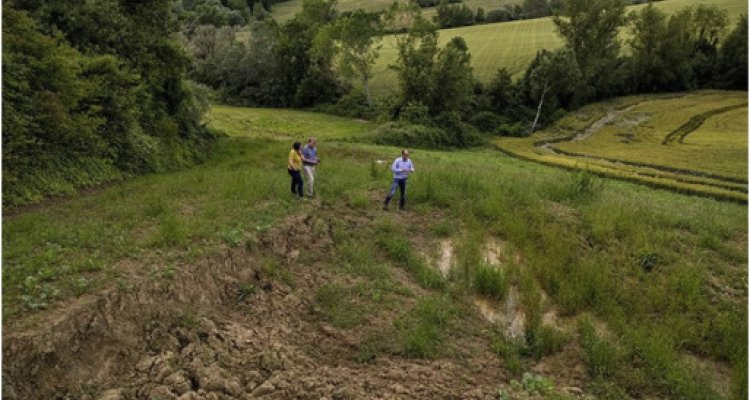
News
Implementing landslide path dependency in landslide susceptibility modelling
A paper of Jalal SamiaI, Arnaud Temme, Arnold Bregt, Jakob Wallinga, John Stuiver, Fausto Guzzetti, Francesca Ardizzone and Mauro Rossi: Implementing landslide path dependency in landslide susceptibility modelling, has been published in Landslides (2018), pp 1–16.
Abstract
Landslide susceptibility modelling—a crucial step to-wards the assessment of landslide hazard and risk—has hithertonot included the local, transient effects of previous landslides onsusceptibility. In this contribution, we implement such transienteffects, which we termBlandslide path dependency^, for the firsttime. Two landslide path dependency variables are used to char-acterise transient effects: a variable reflecting how likely it is thatan earlier landslide will have a follow-up landslide and a variablereflecting the decay of transient effects over time. These twolandslide path dependency variables are considered in additionto a large set of conditioning attributes conventionally used inlandslide susceptibility. Three logistic regression models weretrained and tested fitted to landslide occurrence data from amulti-temporal landslide inventory: (1) a model with only conven-tional variables, (2) a model with conventional plus landslide pathdependency variables, and (3) a model with only landslide pathdependency variables. We compare the model performances, dif-ferences in the number, coefficient and significance of the selectedvariables, and the differences in the resulting susceptibility maps.Although the landslide path dependency variables are highly sig-nificant and have impacts on the importance of other variables,the performance of the models and the susceptibility maps do notsubstantially differ between conventional and conventional pluspath dependent models. The path dependent landslide suscepti-bility model, with only two explanatory variables, has lower modelperformance, and differently patterned susceptibility map than thetwo other models. A simple landslide susceptibility model usingonly DEM-derived variables and landslide path dependency vari-ables performs better than the path dependent landslide suscepti-bility model, and almost as well as the model with conventionalplus landslide path dependency variables—while avoiding theneed for hard-to-measure variables such as land use or lithology.Although the predictive power of landslide path dependency var-iables is lower than those of the most important conventionalvariables, our findings provide a clear incentive to further explorelandslide path dependency effects and their potential role in land-slide susceptibility modelling.
Keywords: Conventional landslide susceptibility; Path dependent landslide susceptibility; Sequential sampling; Non-sequential sampling; Multi-temporal landslide inventory